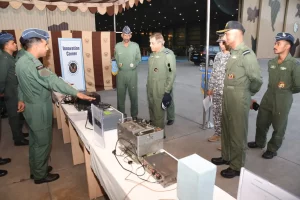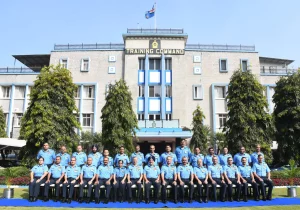For aspirants of the National Defence Academy (NDA) and Combined Defence Services (CDS), understanding world geography is crucial. These prestigious exams test not only your knowledge of national and international issues but also your analytical ability to connect diverse concepts. Among the subjects tested, geography plays a vital role, especially because of its direct relevance to military strategy, international relations, and resource management. This article will explore the importance of world geography in NDA and CDS exams and how to approach it effectively.
1. Significance of World Geography in NDA and CDS Exams
In both the NDA and CDS exams, geography forms a core part of the General Knowledge (GK) paper. The questions are often designed to assess your understanding of physical, political, and economic geography, and how well you can apply this knowledge to real-world situations. The questions may range from the location of countries, capitals, and landmarks to understanding global phenomena like climate change, ocean currents, and tectonic movements.
a. Geography in Military Strategy
Geography is directly linked to military strategy. A thorough understanding of the world’s physical features—such as mountains, deserts, rivers, and oceans—can be crucial for strategic defense planning. For example, the knowledge of mountain passes in the Himalayas or the strategic location of islands in the Indian Ocean is essential for defense officers. In the NDA and CDS exams, geography questions test your ability to understand these key concepts, which will be useful in your future military career.
b. Geography and International Relations
Geopolitics, a sub-discipline of geography, is deeply intertwined with international relations. A country’s geographic location often influences its foreign policies, trade routes, and defense alliances. Aspirants who understand the geographic importance of regions like the Middle East, South China Sea, or Arctic Circle will be better equipped to tackle questions on current events, defense strategies, and international diplomacy.
c. Geography and Resource Management
The distribution of natural resources—oil, coal, minerals, and water—is uneven across the globe, and this impacts global trade, economics, and conflicts. For defense aspirants, understanding the geography of resources helps in analyzing why nations compete for control over certain regions, such as the oil fields in the Middle East or the mineral-rich regions of Africa.
2. Key Areas of World Geography for NDA and CDS Aspirants
Here are some of the essential areas of world geography that aspirants should focus on:
a. Physical Geography
Physical geography includes the study of natural features like mountains, rivers, deserts, oceans, and climatic patterns. In the NDA and CDS exams, questions are commonly asked about global physical features such as the highest mountain ranges, longest rivers, major deserts, and the formation of plateaus or volcanoes. It’s important to understand how these physical features influence not just the environment but also military tactics.
b. Political Geography
Political geography involves the study of boundaries, capitals, and locations of countries, as well as the political significance of different regions. You might be asked to identify countries that share borders, international organizations based on regional cooperation (like ASEAN or SAARC), and dispute-prone areas like the India-Pakistan border, or the South China Sea.
c. Economic Geography
This area focuses on the distribution of resources, global trade routes, and economic zones. NDA and CDS often have questions that touch on important sea routes like the Suez Canal or the Panama Canal, global trade hubs, and major industrial belts across the world. Understanding global economic geography is also essential for interpreting global events and their impact on defense policies.
d. Geopolitics
This section requires understanding how geographic factors affect international politics. For instance, why the Middle East remains a strategic area for global powers, or why certain countries are part of international disputes due to their geographic location. Questions in this area may link to current events, so staying updated on global news is essential.
3. Effective Preparation Tips for Geography
a. Study Maps
Studying maps is the best way to visualize geography. Keep a physical map or a globe handy to locate countries, water bodies, and mountain ranges. Regularly practicing map-based questions will enhance your ability to recall locations during exams.
b. Use Mnemonics for Quick Recall
To remember the location of countries, capitals, rivers, and deserts, use mnemonic devices. For example, to remember the countries bordering the Mediterranean Sea, you could create a mnemonic using the first letter of each country.
c. Stay Updated on Current Affairs
Reading the news, especially on global politics and international trade, will help you understand the real-world application of geography. This is particularly useful for CDS aspirants, where current affairs play a major role in the exam.
d. Practice with Previous Years’ Papers
Going through previous NDA and CDS exam papers will give you a good idea of the type of geography questions asked. It will also help you gauge which areas of geography are most frequently tested.
4. Conclusion
For NDA and CDS aspirants, world geography is not just another subject in the syllabus; it is a gateway to understanding the global stage where future military officers will play key roles. A solid grasp of physical, political, and economic geography is essential for interpreting global events, planning military strategies, and understanding geopolitical dynamics. By focusing on maps, current affairs, and global phenomena, you can strengthen your preparation and improve your chances of excelling in these exams.
Ultimately, geography is a powerful tool for defense officers, as it provides the spatial awareness and knowledge needed to make informed decisions on national security and international diplomacy.



















